I saw the Airbus A320 plane that crashed in the Hudson River 15 years ago. I was moved by the rawness of the exhibit and survivors.
The Airbus A320 airliner that ditched in the Hudson River in 2009 is now an aviation artifact.
None of the 155 passengers and crew died during the "Miracle on the Hudson" crash.
I was blown away when I visited the jet at the Sullenberger Aviation Museum to see the famous plane.
On January 15, 2009, a fully loaded US Airways Airbus A320 plane ditched into the Hudson River after a bird strike caused both engines to fail.
The accident has since been described as the "Miracle on the Hudson" because none of the 155 passengers and crew onboard died.
Captain Chesley "Sully" Sullenberger and First Officer Jeffrey Skiles were in the cockpit that day and had just seconds to make a life-or-death decision.
Recognizing the aircraft was running on near zero thrust at just 2,800 feet above the densely-populated New York City, Sully saw the river as his only nearby obstacle-free option.
"I couldn't afford to be wrong," Sully said during his testimony in front of the National Transportation Safety Board.
The crew's heroism is now cemented in the Sullenberger Aviation Museum in Charlotte, North Carolina, which opened in June and features the real A320 jet as its centerpiece.
As an aviation safety professional turned journalist, I had to visit the plan as soon as I could. I love that it has been given a second life, representing not only the power of bravery and skill but also inspiring future generations to get involved in aviation.
The famous A320 displayed in Charlotte is the real aircraft — not a replica — and is complete with all the damage it suffered in the crash.
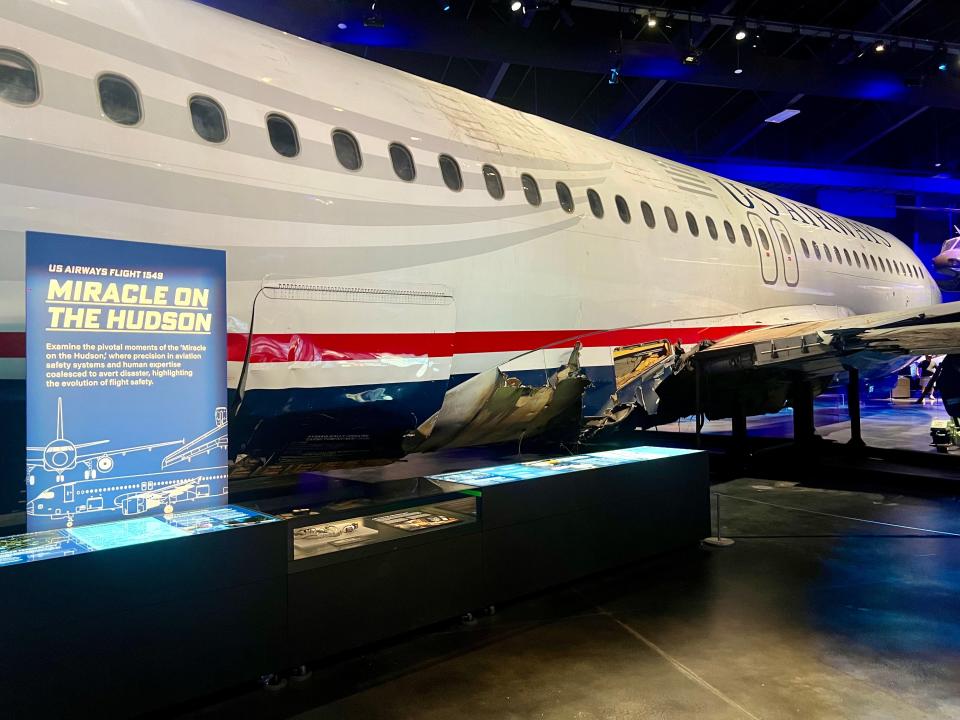
The Sullenberger Aviation Museum opened on June 1 and is the second rendition of the exhibit.
The aircraft was first displayed in 2015 in the same location but was stored in 2020 while the museum was renovated and renamed in Sully's honor.
"With this Museum, we have the power to shape and inspire the next generation of innovators through the exploration and wonder of flight and provide equitable access to STEM opportunities," museum President Stephen Saucier told Business Insider.
There's a hole in the nose and extensive breakage along the fuselage and tail.
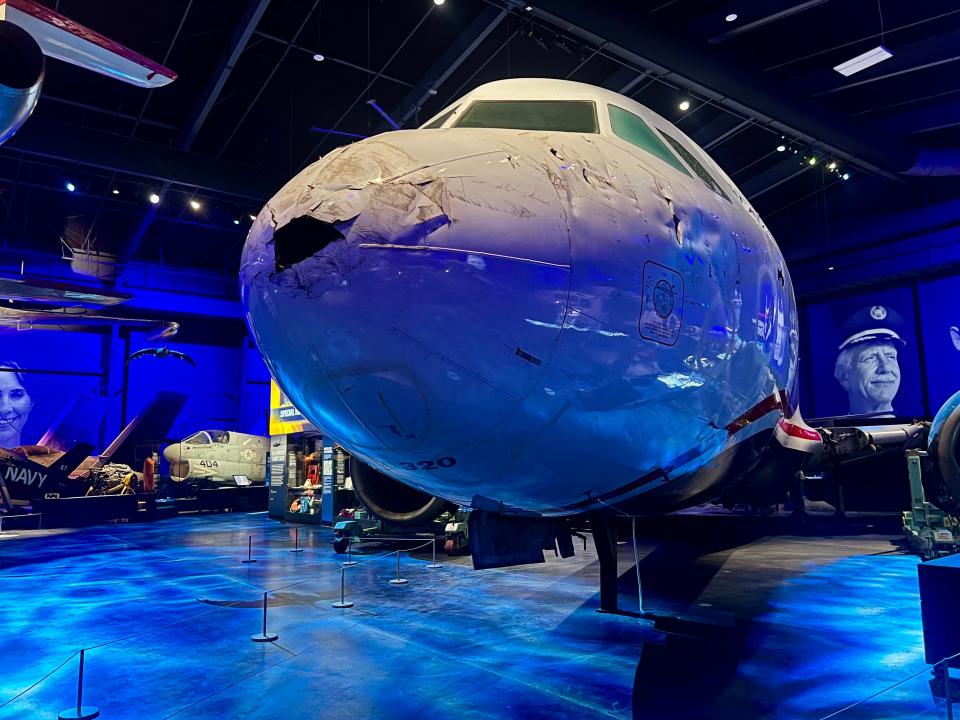
The aircraft has been maintained as it was after the investigation, including the dents, scrapes, and gaping holes.
I could see writing and numbers on the fuselage where investigators worked on the jet.
The wings were attached to the jet, but the flaps were wrecked from the crash.
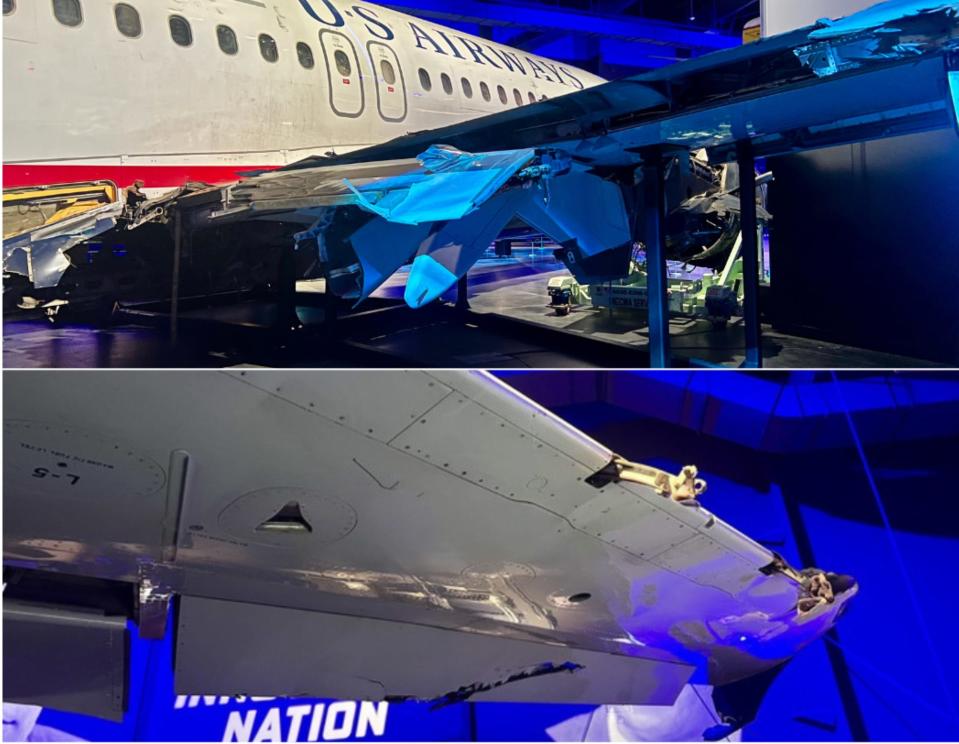
The flaps were particularly important in the crash's success because Sully opted not to fully configure them for landing, per the NTSB. According to one of the museum signs, full flaps were part of Airbus' "optimal aircraft configuration" for landing on water.
In a non-emergency landing, the flaps are fully deployed to increase lift at lower speeds as the plane descends. This balances out if you have thrust. However, without thrust on Flight 1549, Sully raised the flaps to prevent a stall, which could have led to an even faster descent rate.
"The choice had to be made quickly because of the extreme time compression," he said in NTSB testimony. "By achieving Flaps 2, we had achieved almost all of the low-speed stall protection that we would've gotten at Flaps 3, but at less drag."
The two destroyed engines are on either side of the aircraft, and the auxiliary power unit, or APU, sits behind.
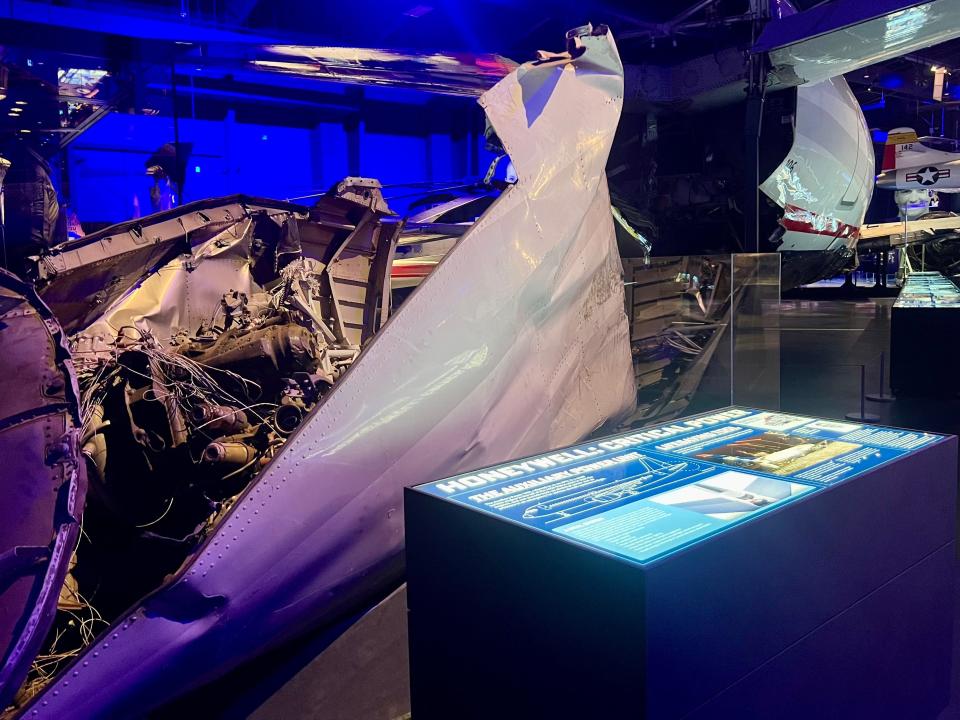
When Sully realized his engines were gone, he instinctively started the Honeywell-built APU. According to the manufacturer, the unit acted as backup power to control things like altitude, speed, and steering.
"The NTSB concluded that by quickly turning on the APU before called for on the emergency checklist, [Sully] significantly improved the outcome by providing electrical power to the airplane," an information display next to the APU read at the museum.
Visitors cannot go inside the jet, but photos displayed show it looks like a regular aircraft cabin.
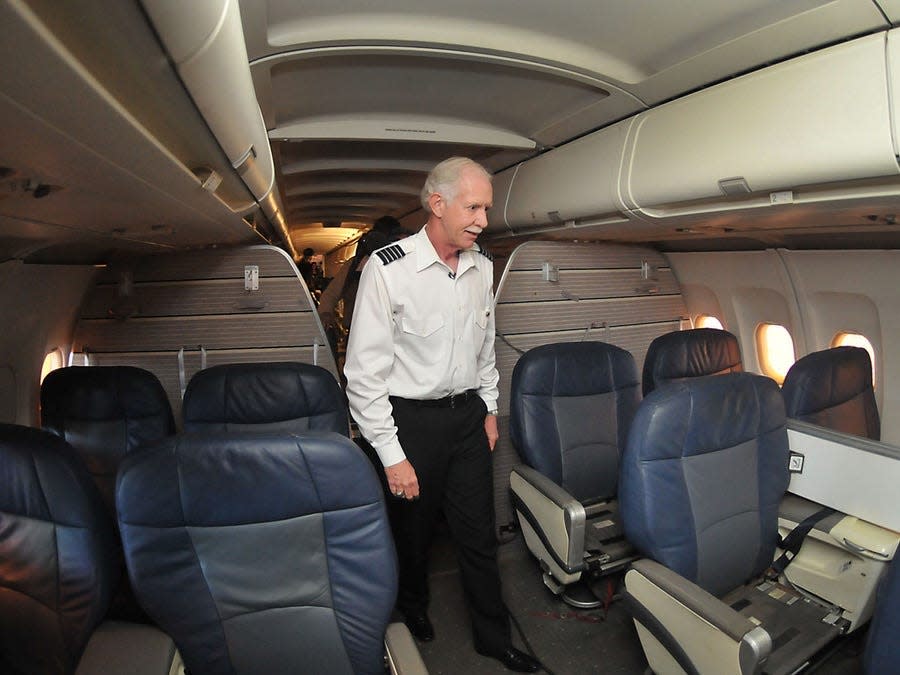
Pictures show the blue seats in the typical domestic layout. The cabin looks old and worn, but not as if it was in a serious crash.
According to the museum, the jet's interior is regularly checked for corrosion, considering it was submerged in water for a few days after the accident.
The plane's underbelly took the brunt of the impact, and I could see where it was torn off.
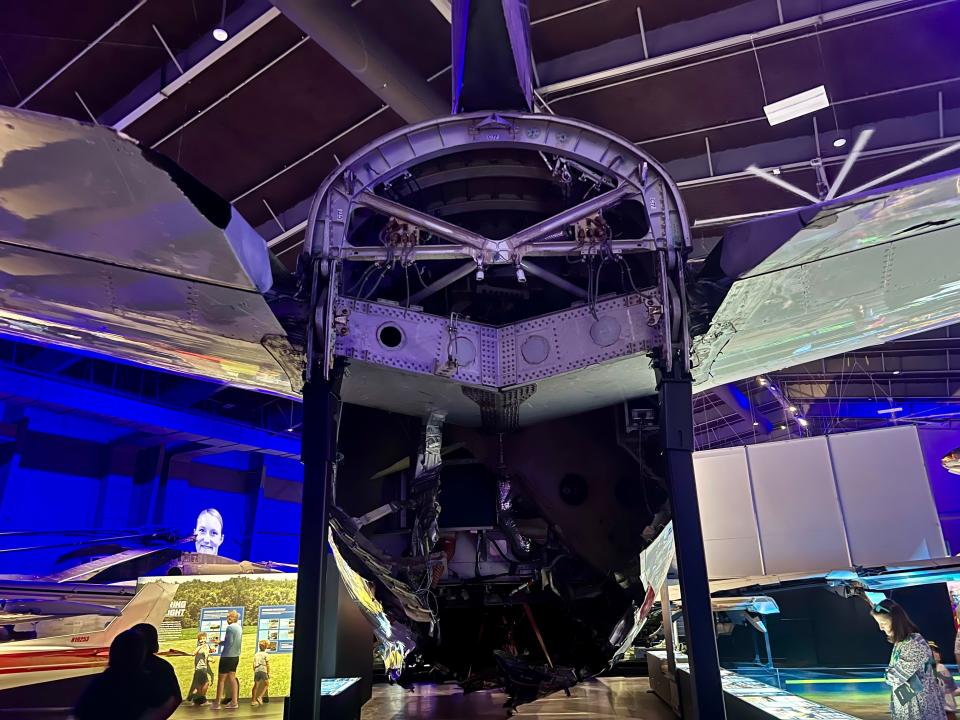
According to the NTSB, the aircraft was descending three times the rate at which the aviation industry said a water landing could happen.
This meant the aircraft's impact on the Hudson was greater than its design allowed, causing part of the frame to collapse and let water seep in.
The damage was extensive, but the aircraft was otherwise surprisingly intact.
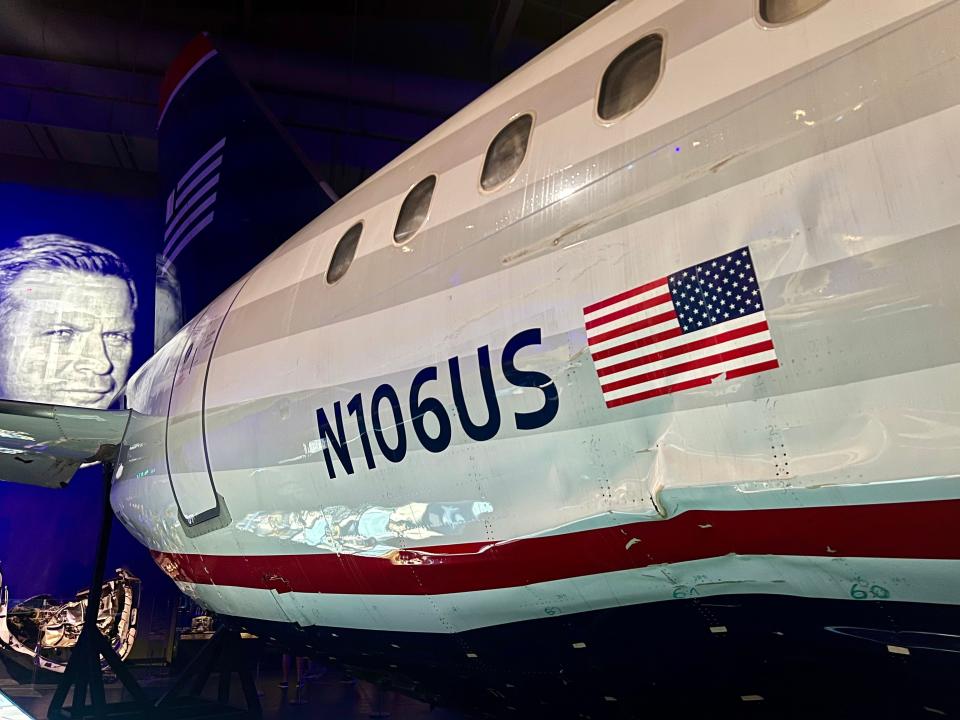
Sully had to land the aircraft at a specific angle to avoid flipping or fully breaking apart upon contact with the water. The museum said this included landing at an 11-degree pitch with the wings level.
Sully achieved this despite the high descent rate being beyond the accepted envelope, making the task that much more challenging and a testament to Sully's skill.
"[Skiles] began to call out to me airspeed and altitude as I was looking at the water ahead to help me judge that critical height," Sully said in a 2019 interview with Inc, referring to the specific altitude at which to begin raising the nose for a successful water landing.
Next to the plane was a case of personal belongings donated by the crew and passengers.
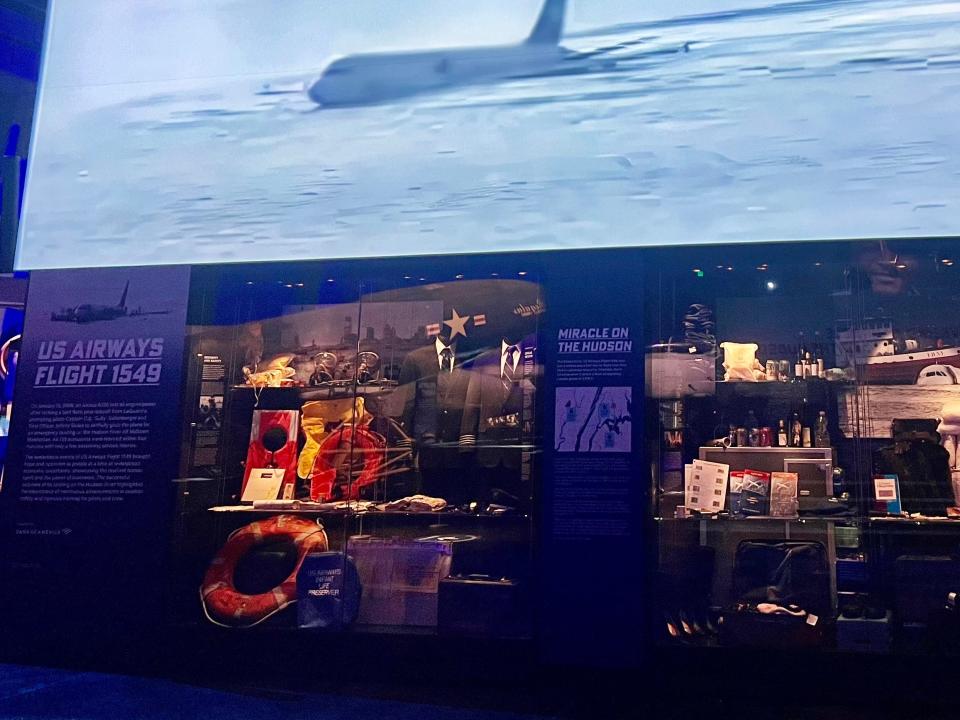
Artifacts like cushions, life jackets, seats, clothes, and even Sully and Skiles uniforms have been preserved and put on display.
It was like a time capsule seeing the old Blackberry cell phone and MacBook Pro.
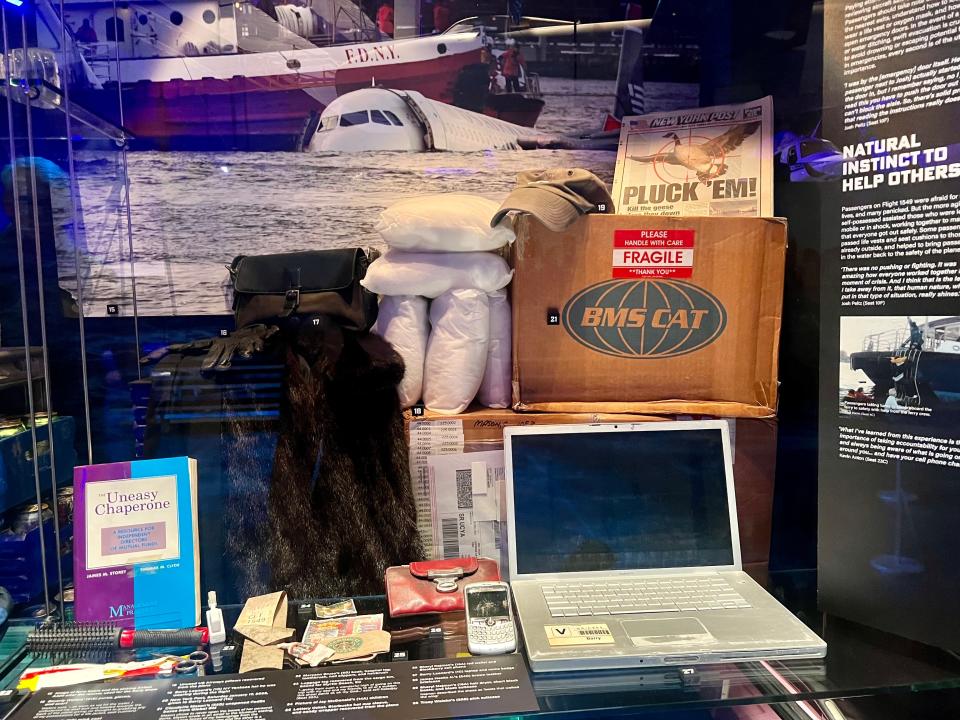
There were also wallets, a finance book, and a fur coat among the inventory of random items that survived the crash.
The most moving element of the exhibit was the film that played on a loop. It told the story of Flight 1549 from takeoff to landing in the Hudson.
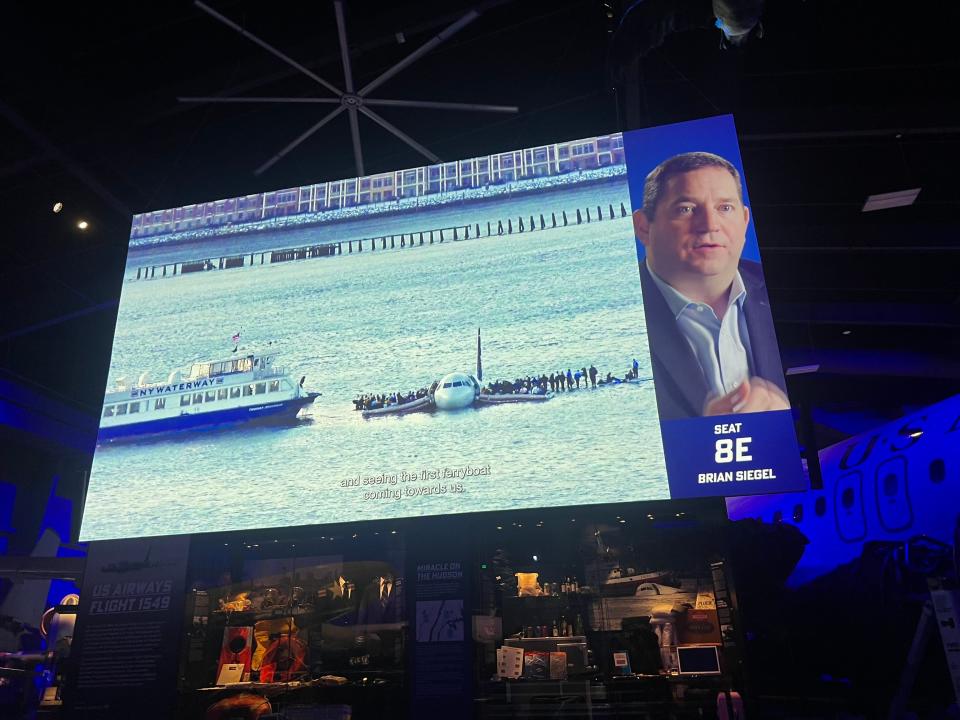
The short video has the air traffic control tapes, footage of the rescue, and testimony from passengers, investigators, and first responders.
"Unable," Sully famously told air traffic controller Patrick Harten when he was asked if he could make it back to LaGuardia. "We're going to be in the Hudson.
The comments were raw, and I couldn't help but get emotional. The crew gets a lot of praise, but the passengers also showed incredible bravery.
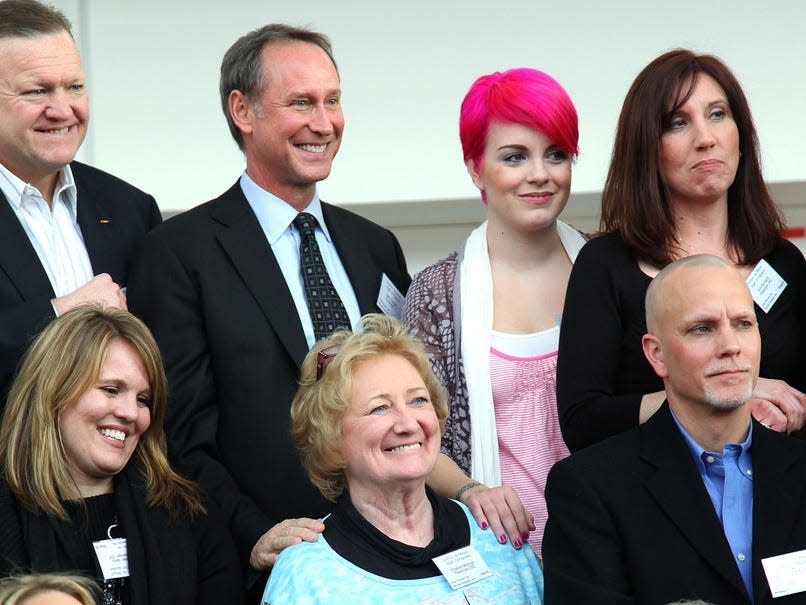
The aircraft lost power just a few thousand feet above NYC, and the passengers described their feelings as the city skyscrapers started rising above them and they descended into the Hudson.
"What flashed before me was the life that wasn't going to happen, the grandchildren I wouldn't see grow up," passenger Beth McHugh, seat 20C, said.
I can't imagine that fear, but seeing the hope after the fact is inspiring.
"The gift of another day, another year, and if you look at it that way, another lifetime," McHugh said later in the video. "By some miracle, we get to have it."
Flight 1549's rescue was swift, with boats and helicopters approaching within minutes.
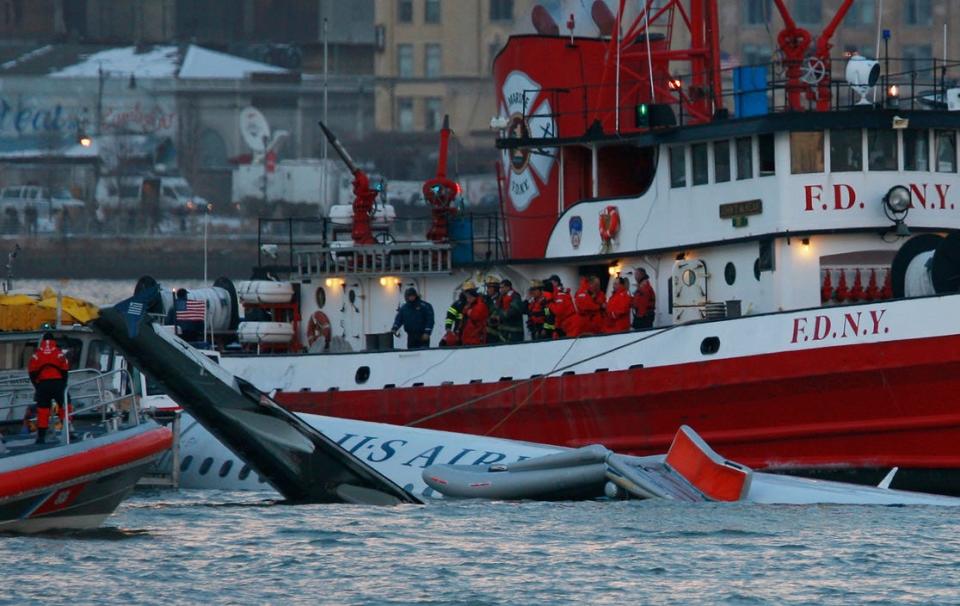
The accident happened in January, meaning the passengers survived the water landing but were still in danger of drowning or getting hypothermia in the frigid Hudson waters.
People walked out onto the wings, jumped into rafts, and some tried to swim to shore — anything to survive the 38-degree water.
"My crew took out 24 people," New York Waterways Captain Brittany Catanzard said in the video. "My deckhands were literally grabbing them like fish and putting them onto the deck."
Flight attendants Donna Denta, Sheila Dail, and Doreen Welsh shouted commands as passengers braced for impact.
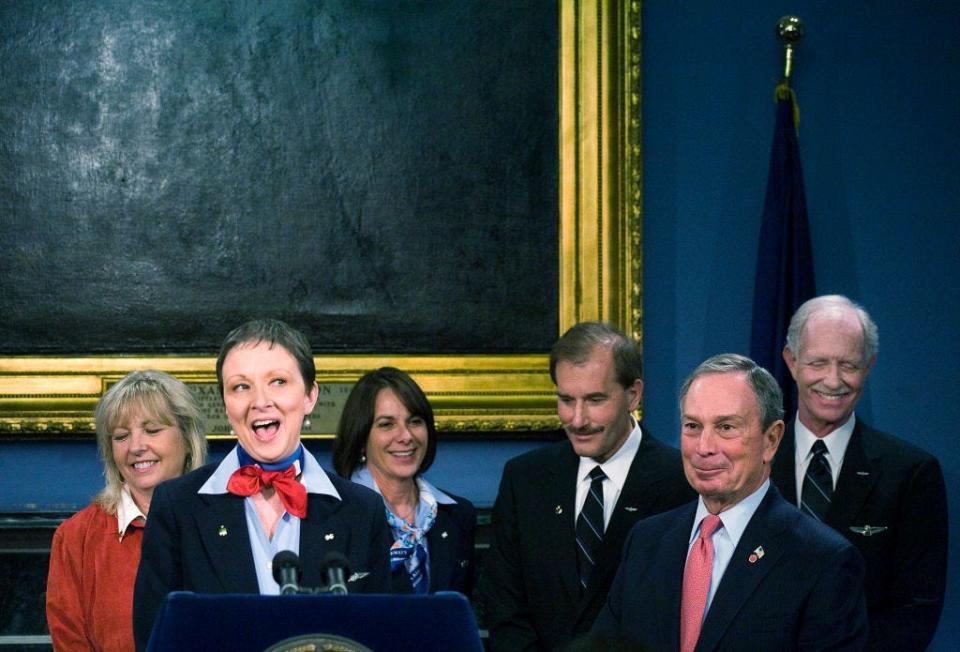
The three quick-acting flight attendants initiated the evacuation within seconds of landing and, alongside Sully and Skiles, were awarded the keys to the city by New York City Mayor Bloomberg in 2009.
"It took all five of us being trained and doing what we do to make this miracle on Hudson," Welsh said, as quoted in the museum exhibit.
Quoted in the display was a comment from passenger Ben Bostic, seat 20A, who noted the unbelievable response effort.
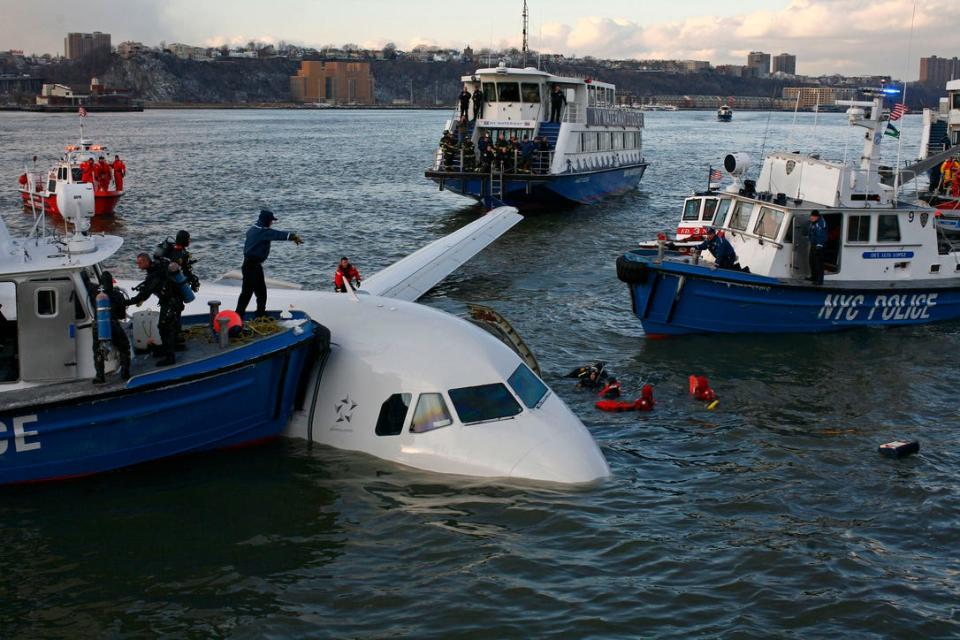
He said agencies like the NYPD, the American Red Cross, and the FBI, as well as the New York governor and NYC mayor were on the scene.
"I quickly noted that this level of response could probably only happen in NYC post-9/11," Bostic said. "For better or worse, they are "battle" tested for incidents like this."
The plane sat at the bottom of the Hudson for two days before being lifted out and taken to New Jersey for the investigation.
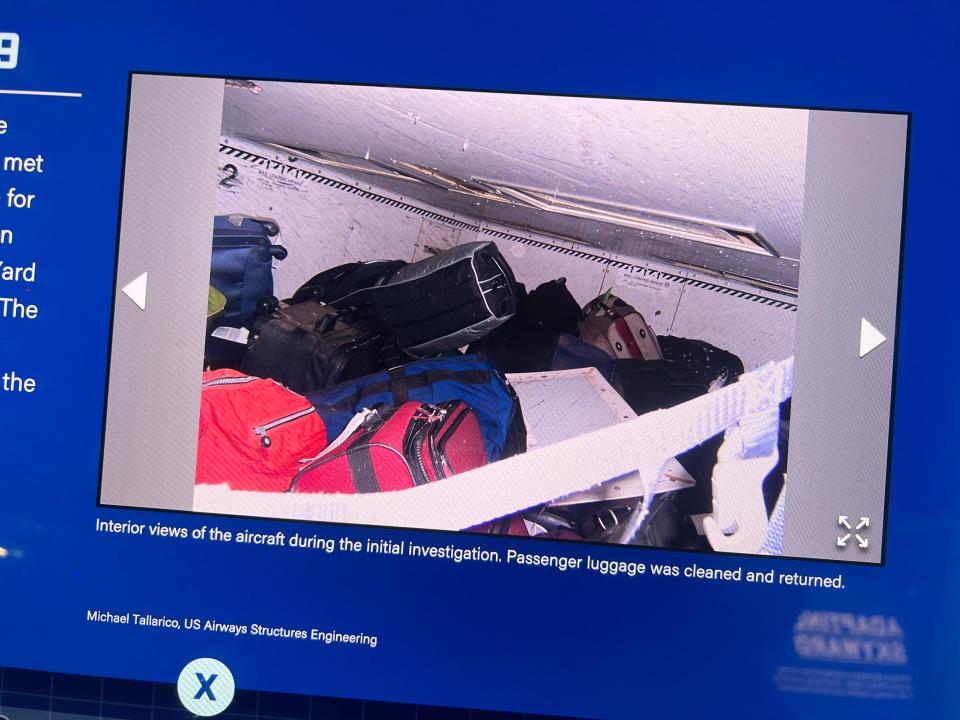
Workers spent 22 hours retrieving the aircraft from the icy waters, which included using a mechanical winch and crane to maneuver the A320 and lift it in one piece.
The aircraft was then moved by barge to New Jersey. According to the museum, passenger luggage was cleaned and returned.
During the investigation, the museum inquired about getting part of the plane but that turned into a donation of the entire jet.
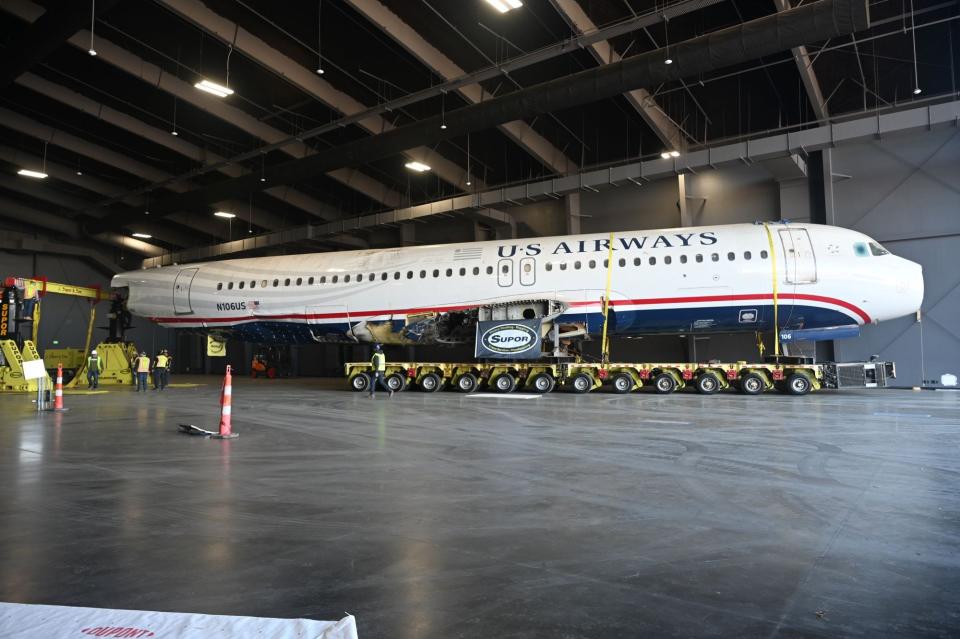
The insurance company donated the A320 to the museum and worked with it and a conservator located in New Jersey to help conserve the plane.
"The goal was the stabilize and preserve the aircraft for museum display while maintaining its historic integrity," the museum said.
It was a monumental task to transport the jet from New Jersey to North Carolina, first arriving in Charlotte in 2011.
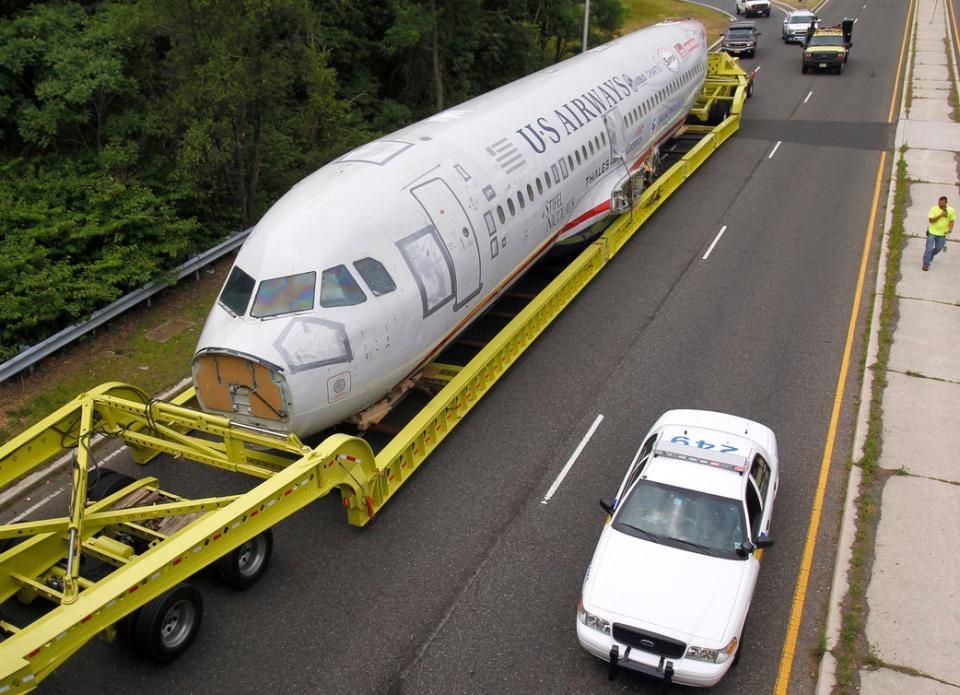
Saucier previously told BI that the A320 had to be transferred via road. Its wings and tail were removed for transport.
He said the tiny towns that hosted the jet on its trek to the museum had to move light poles and make other adjustments so the plane could weave through the streets.
The engines were delivered a year later.
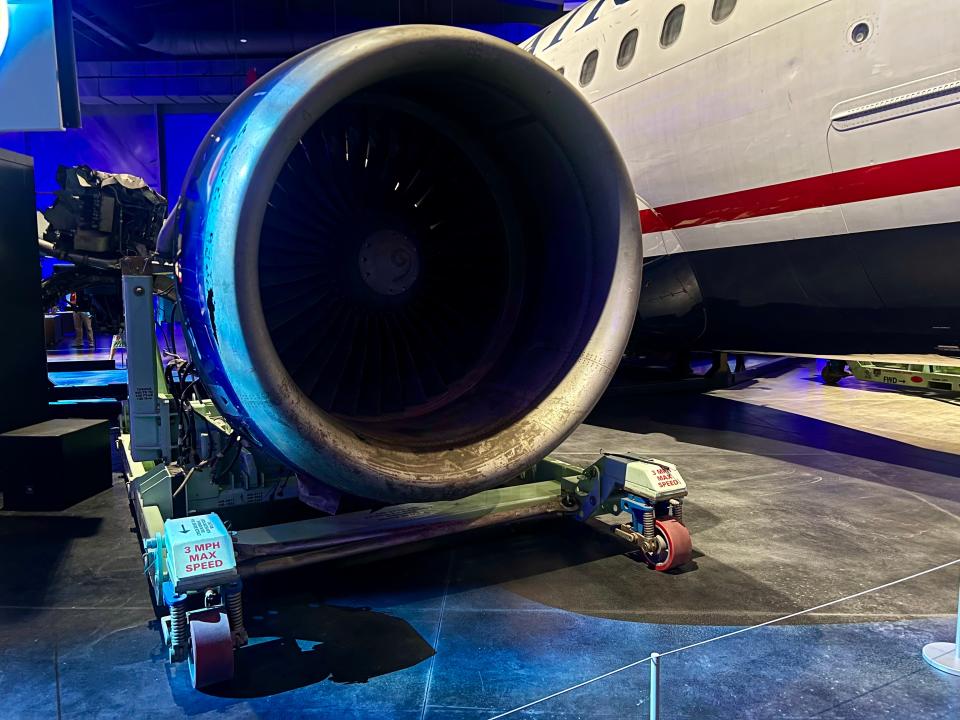
The museum said it took three years to reassemble the engines with assistance from volunteers from then-US Airways, which has since merged with American Airlines.
It noted the engines were corroding, having been exposed to the marine environment, and had to undergo extensive conservation treatment to preserve them.
The original exhibit closed in 2019 to make way for the new, and I love the focus on not just the crash but the evolution of aviation safety.
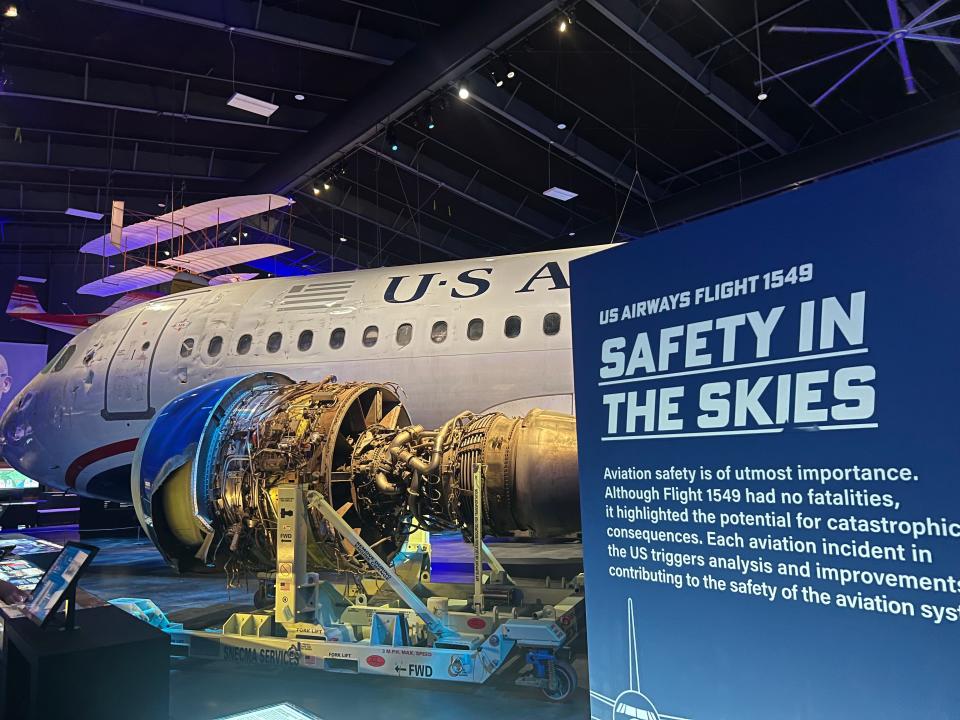
The aviation industry learned a lot from the accident, and the NTSB made recommendations, such as improving life vests and developing better engine testing for bird ingestion.
"[The A320] stands as a carefully preserved tangible reminder of the paramount importance of safety in aviation," read the exhibit.
Most notable was the human factors element, as Sully and Skiles had just seconds to decide how to save the plane.
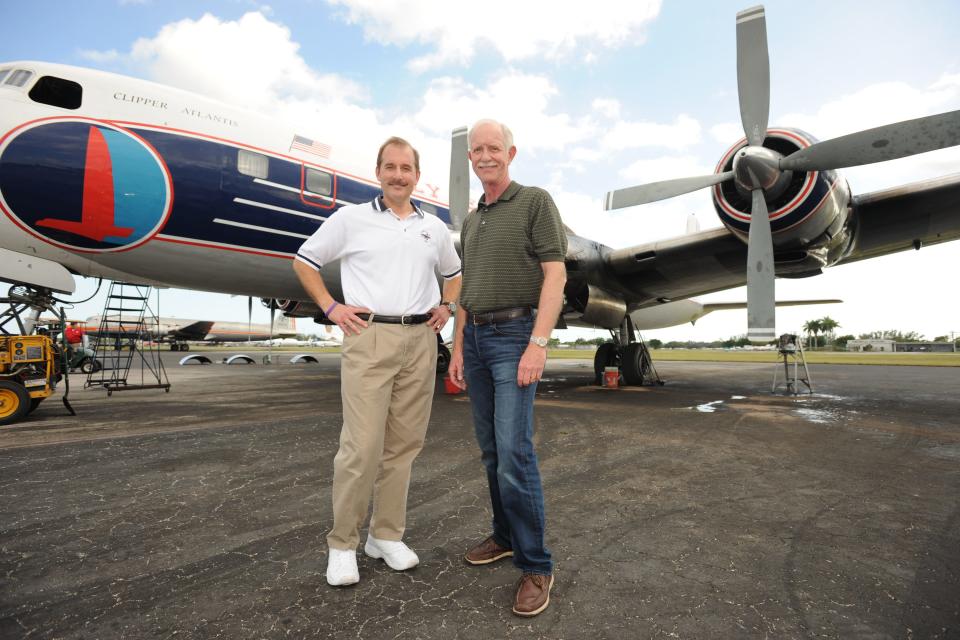
In a 2019 interview, Sully said he asked Skiles right before the landing if there was anything more they could do. Skiles said, "Actually, not."
"He answered that way because he knew we'd done all we could," noting it wasn't because Skiles was indifferent or had accepted some fate.
"The fact we could have that exchange just before the emergency landing of a lifetime is one of the more remarkable things about this flight and this crew and our diligence, our dedication to never give up."
Read the original article on Business Insider


